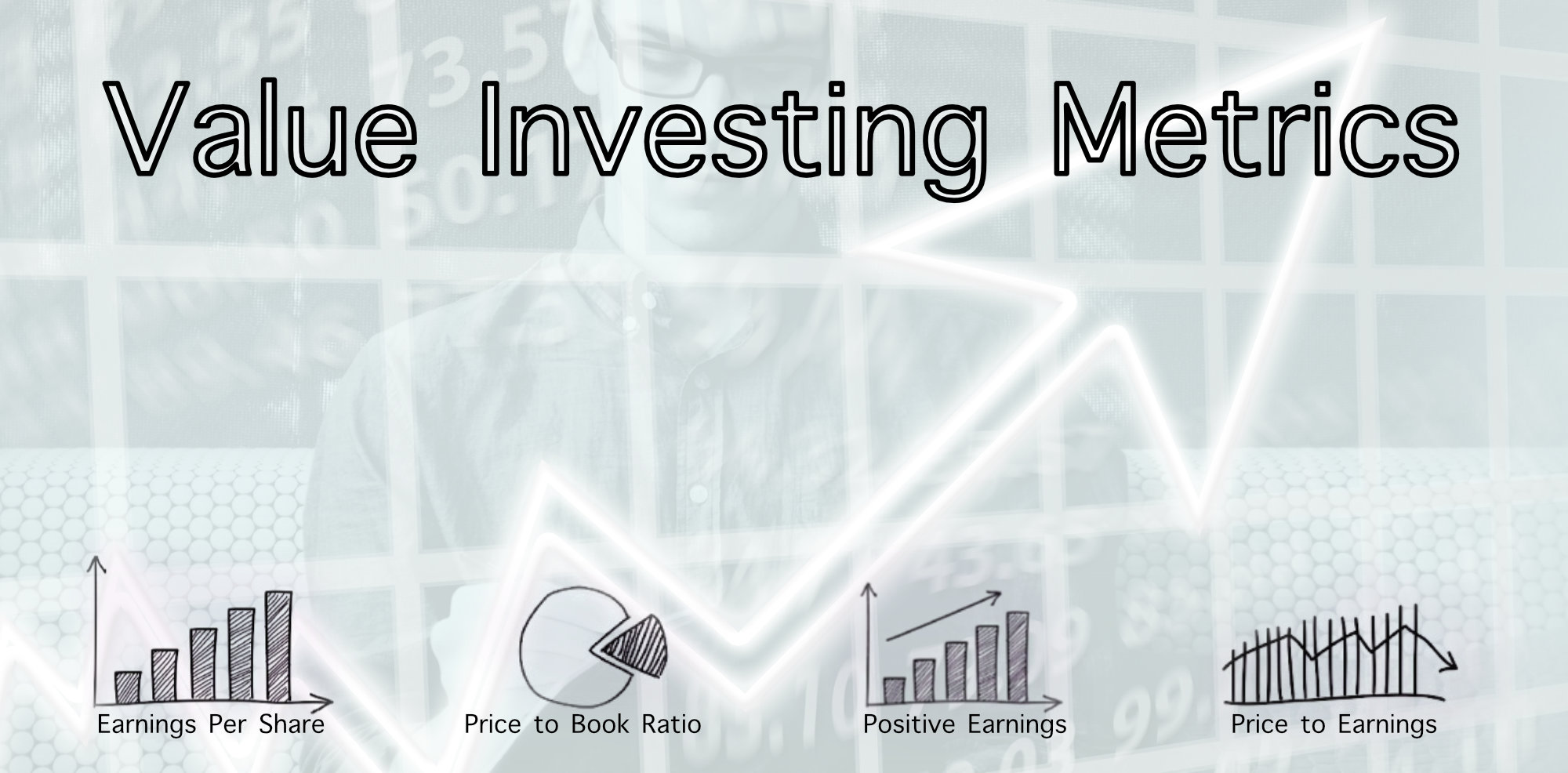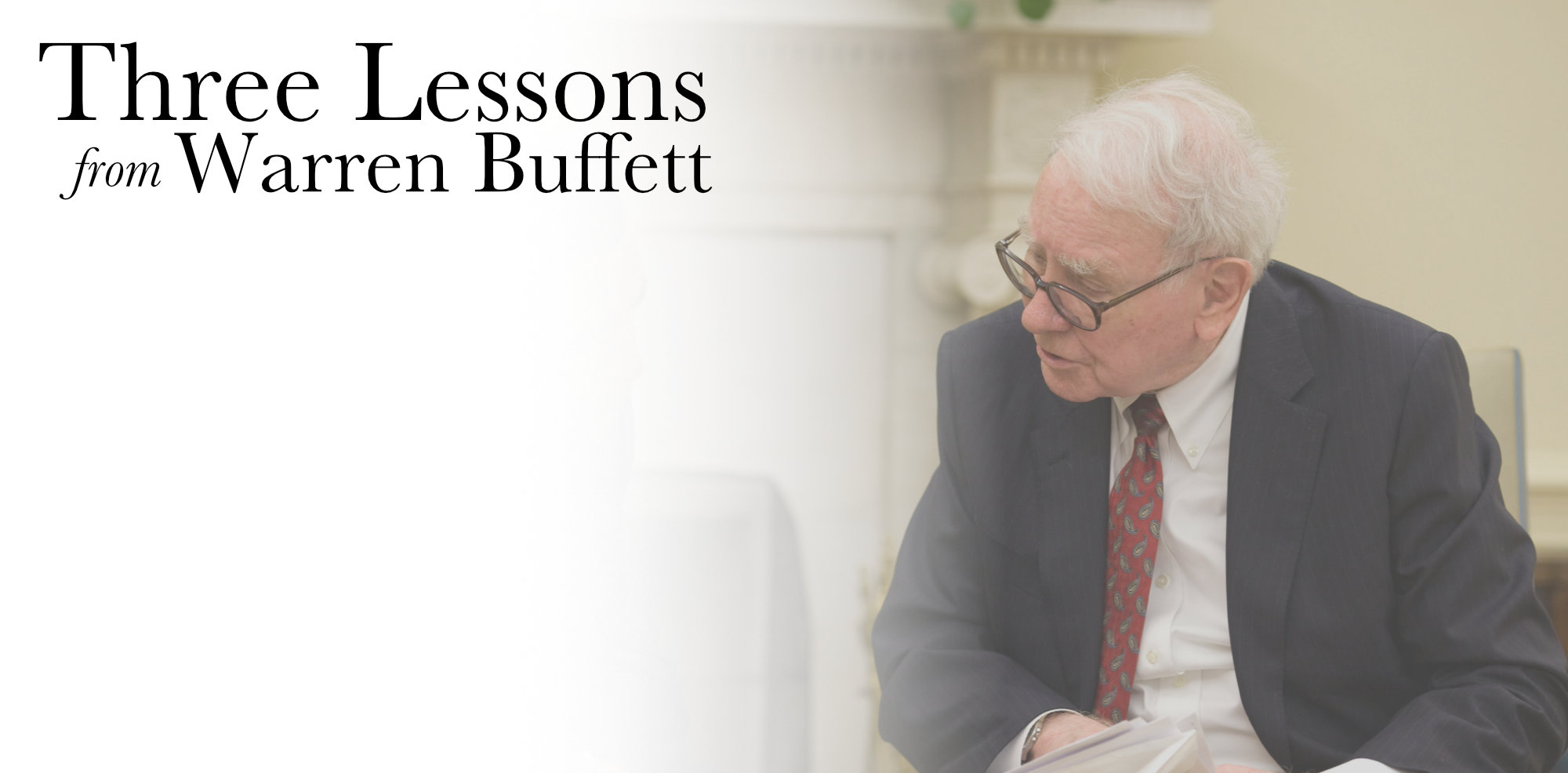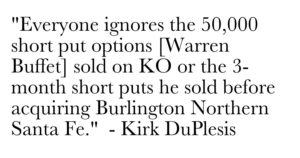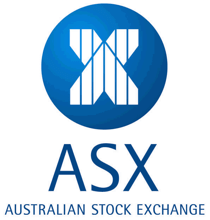
by John | Oct 2, 2016 | Capital Appreciation, Value Investing
Warren Buffett is known as a value investor. He’s been very successful so I looked at the fundamental indicators and metrics of his most profitable purchases to see if the metrics I use would have led me to purchase the stocks Buffett did.
What I found was that the six metrics I use when choosing a value stock are consistent with Buffett’s purchases.
By way of background, here are the six Value Investing Metrics I use:
- Price to book of less than 1 (can go up to a PB of 1.5)
- Price to earnings less than 15
- Positive Cashflow
- Positive Earnings per share
- Return on equity greater than 8% on average per year
- Dividend Yield
Wells Fargo (WFC)
Total return: 9,417%
Buffett started buying Wells Fargo stock in 1990. At the beginning of the year, the P/B was 1.668 and by the end it was 1.379, for a rough estimated P/B ratio of 1.5. Using similar tactics We find the metrics for Wells Fargo around the time Buffett was buying up shares:
- Price to book: 1.5
- Price to earnings: 8
- Cashflow: 1.668 billion
- Earnings per share: $.3450
- Return on equity: 19.52%
- Dividend Yield: 4%
Source: ycharts.com
PetroChina (PTR)
Total return: 720%
Buffett bought this Chinese stock in 2002-2003 and sold in 2007.
- Price to book: Data not available
- Price to earnings: 6
- Cashflow: 1.668 billion
- Earnings per share: $3
- Return on equity: 15.41%
- Dividend Yield: 7.5%
Fundamentals in 2007:
- Price to book: 3.194
- Price to earnings: 17
- Cashflow: 26.83B from operations
- Earnings per share: 10.64
- Return on equity: 23%
- Dividend Yield: 3%
It’s interesting that the price to book was relatively higher than a traditional value stock. The dividend yield had fallen and both cashflow and earnings per share had expanded tremendously.
His decision to sell PTR would likely also have factored in management, industry climate and political optics. To that last point, he may have wanted to pivot from an oil company to an electric car company because of the long term prospects and that it is more consistent with what democrats in the US find acceptable.
Source: ycharts.com
BYD (BYDDF)
Total Return: 671%
Buffett bought this Chinese electric car maker in 2008. I had trouble finding historical stats for BYD. The following BYD stats are based on this article and the 2008 financial report.
- Price to book: 2.5
- Price to earnings: <8
- Cashflow: $273 million (converted from RMB1,816,362)
- Earnings per share: $.08 (converted from RMB0.50
- Return on equity: ???
- Dividend Yield: none in 2008 but did pay a dividend in 2007
Source: http://bydit.com/userfiles/attachment/2009042009130534224.pdf
The price to earnings ratio is certainly attractive and the company is cashflow positive. The price to book is rather rich but a large factor in this purchase was probably the endorsement of Buffett’s right hand man, Charles Munger:
In 2008, Munger sold Buffett on Chinese car battery company BYD by saying that its CEO, Wang Chuan-Fu, was quite obviously a descendant of both Thomas Edison and Jack Welch. He solves problems like Edison and gets things done like Welch, Munger said. “I’ve never seen anything like it in my life.”
Source: http://fortune.com/2014/10/31/warren-buffett-best-investments/
Coke (KO)
Total Return: 1,600%
Buffett is famous for owning Coke. He started buying the stock in 1987. I found an insightful article on why Warren Buffett bought Coke in 1987. Coke wasn’t a value stock by traditional metrics.
Coke was selling around 15 times earnings and I believe somewhere around 5 times book value at the time.
Source: http://basehitinvesting.com/mohnish-pabrai-heres-why-buffett-bought-coke-ko-in-1987/
Buffett instead looked at the value of the brand and determined that it would cost $100 billion to build a similar brand and that Coke was undervalued since the whole company could be purchased for $20 billion.
He also started buying it in the same year as the 1987 stock market crash, putting into practice his adage: “We simply attempt to be fearful when others are greedy and to be greedy only when others are fearful.”
It’s a great example of how the value investing metrics are important, you can still be successful without them if there is an overarching larger reason why the stock is relatively undervalued.
Berkshire Hathaway (BRK.A)
Total return: 1,745,300%
Buffett bought this new england textile company in 1965 and used it as a holding company by the same name. I found some stats in this article.
- Price to book: .76
- Price to earnings: 7
- Cashflow: yes
- Earnings per share: Start of year: $3.7
- Return on equity: ???
- Dividend Yield: yes
A Proven Strategy
Value investing is a proven strategy. While there are few guarantees in life or investing it is no coincidence that one of the world’s most famous investors and wealthy investors is a value investor.
For a current list of the value stocks I like, click here.

by John | Sep 25, 2016 | Capital Appreciation, Passive Income, Preservation of Purchasing Power, Value Investing
Value investing is a way to bring intelligence back into stock selection.
Everyone loves a great deal when they’re shopping but for some reason that love does not transfer when shopping for stocks. Many retail investors tend to buy expensive stocks as they are getting more expensive.
They pile into trendy growth stocks like Twitter and Netflix.
It doesn’t make sense.
Making money in stocks can be done in just two ways:
1) buying low and selling high
2) dividends
Because many investors like to buy expensive stocks with no dividend the prevailing strategy has become “buy high, sell higher”.
This could work some of the time but if you buy stocks at all time highs (like many are now) who are you eventually going to sell them to? You’d have to find someone else who wants to buy them at an even higher price or sell them at a loss.
Buying overpriced stocks also leaves a person much more vulnerable during a stock market correction as was experienced by countless stock owners in 2000 and 2008.
An Intelligent Approach: Value Investing
Value investing takes that same desire to find a bargain while shopping and applies it to stock selection.
Value investing is purchasing the shares of quality companies trading at a discount.
In other words, you’re buying stock in a company that is undervalued. This creates a margin of safety and built-in downside protection. It’s a way of increasing the odds that you are buying a stock low so you can sell it higher later (or so you can hold it and collect the dividends).
Is Value Investing just buying Cheap Stocks?

Cheap lawn chairs tend to collapse when you’re sitting in them
Value investing isn’t buying cheap stocks. Value investing is buying high quality companies at a price below their book value.
You can find a deal on a high quality lawn chair and pay less than you would for a lower quality, more expensive lawn chair. The key to spotting a bargain is to know what to look for. Fortunately, there are a number of indicators (or metrics) one can look at to determine if a stock is both low cost and high quality.
What indicates a stock is a Great Value?
[Note from John, 5 Feb 2017: While the principles of value investing are timeless I have since started looking at Better Metrics for Value Investing.]
The metrics I look at are as follows:
- Price to book of less than 1 (can go up to a PB of 1.5)
- Price to earnings less than 15
- Positive Cashflow
- Positive Earnings per share
- Return on equity greater than 8% on average per year
- Dividend Yield
I’ll break down each one below.
Price to Book
The Price to Book ratio is calculated by taking the companies’ market capitalization and dividing it by the companies’ total assets minus total liabilities. A low price to book could indicate that a stock is undervalued.
If the P/B is below 1 that means if the company’s assets were liquidated and the stockholders were paid out in cash they would get more than what they paid for the stock.
Price to Earnings
The historical average for the stock price to earnings ratio is 15. The current PE ratio for the S&P 500 is around 25. By purchasing stocks with a PE less than 15, you’re ensuring the company’s price to earnings is below the historical average. It’s another indicator of value.
Source: http://www.multpl.com/
Positive Cashflow and Earnings per Share
A low price to book by itself could indicate that a stock is undervalued or that the company is on shaky ground. Positive cashflow and positive earnings per share means that the company is making money. The higher the EPS the better all else given.
Return on Equity
A return on equity of 8% or more over a period of years indicates the company consistently produces value to shareholders. It’s another way to ensure the company is healthy and is not undervalued due to a fundamental issue with the performance of the business.
Dividend Yield
This is the second way to make money on a stock. If a company provides a yield that means the investor is being compensated for holding the stock while waiting for the undervalued equity to revert to a more fair valuation.
Does Value Investing Work?
Value investing was pioneered by Benjamin Graham. You may never have heard of Benjamin Graham but it’s likely you’ve heard of Graham’s most successful student, Warren Buffett.
The investing principles Buffett used to grow his wealth were developed and taught by Benjamin Graham, the father of value investing.
Value investing is the way Warren Buffett became one of the richest men alive.
Getting Started in Value Investing
You can look for stocks that meet the criteria I’ve discussed above and purchase them individually.
Another option is to buy a value index fund. A a passive index fund takes little research and is theoretically lower risk.
An example of such a fund is the Vanguard Value Index Fund (VIVAX). The problem I have with funds like this is that the stocks in the fund aren’t the best values. For example, the largest holding in VIVAX is Microsoft (MSFT).
MSFT has a price to book of 6.2 and a price to earnings of 27.4. The other major holdings of VIVAX like Exxon Mobil and GE follow a similar story.
Microsoft and Exxon are quality companies but at these prices they don’t represent the extremely high value stocks I’m interested in.
Value investing like all investing is not without risk. But I believe taking the time to research undervalued stocks that present exceptional value is worth it.
Intelligent Research on Value Stocks
For a passive and defensive investor, value investing through index funds is fine. However, I believe an enterprising investor willing to dive deeper can make even better returns. But not everyone has the time or resources to research stocks that meet the criteria of a quality value stock.
I maintain a list of the stocks I like, access it fr-ee here.
Find An Edge
An Edge: a quality or factor that gives superiority over close rivals or competitors.
It’s hard to make money on stocks like Apple or Microsoft that have dozens of analysts following them, where virtually everything is known about the stocks, and which are traded at high frequency by Wall Street computer algorithms.

If you don’t know what your edge is you don’t have one.
I also think that there are exceptional values outside of the standard US stock exchanges.
I’m particularly fond of the Australian Securities Exchange because it is outside the Wall Street bubble but still a stable jurisdiction. My free report lists two brokers that will allow you to trade stocks in the land down under.
Wisdom from Benjamin Graham
I close this article with a quote from the Father of Value Investing:
“…the real money in investment will have to be made–as most of it has been in the past–not out of buying and selling but of owning and holding securities, receiving interest and dividends and increases in value.” – Benjamin Graham from The Intelligent Investor

by John | Sep 18, 2016 | Capital Appreciation, Investor Mindset, Investor Psychology, Tax Strategies, Value Investing
Warren Buffett is considered to be one of the most successful investors. He’s one of the wealthiest people in the world and he’s also fond of publicity and public appearances.
If you have some humility and don’t get caught up in jealousy you can learn a lot from wealthy and successful people like Warren Buffett.
My own Father is fond of saying that poor people should take rich people out to lunch. The idea being that the wisdom that can be gained from the wealthy is worth more than paying for lunch.
So what lessons can we learn from Warren Buffett?
Do As Warren Buffett Does, Not As He Says
 There is an old expression “Do as I say, not as I do.” With Warren Buffett it is “Do as I do, not as I say.”
There is an old expression “Do as I say, not as I do.” With Warren Buffett it is “Do as I do, not as I say.”
Warren Buffett talks A LOT and shares a lot of opinions. But you shouldn’t follow what he says as advice because he might actually be doing the opposite of what he is saying.
In order to learn lessons from Buffett one must first filter out a lot of what he says.
There is a quote from Daniel Loeb that summarizes Buffett’s contradictions quite succinctly.
“He criticises hedge funds yet he really had the first hedge fund,” Loeb said. “He criticises activists. He was the first activist. He criticises financial service companies, yet he likes to invest in them. He thinks that we should all pay more taxes but he loves avoiding them himself.”
Source: http://www.smh.com.au/business/warren-buffett-is-full-of-contradictions-hedge-funds-say-20150507-ggwv2o.html
Without further ado here are three lessons we can learn from Warren Buffett.
Lesson 1: Reduce Your Taxes
While publicly discussing how he wants to pay more taxes Warren Buffett has taken extraordinary steps to reduce his taxes.
Source: http://www.nytimes.com/2011/08/15/opinion/stop-coddling-the-super-rich.html
From how he structures his businesses to how he is paid to how he has bequeathed his inheritance Warren Buffett does all he can to reduce his taxes. He gets paid through dividends and long term capital gains rather than ordinary income. He’s also left 99% of his fortune to a private charity to avoid paying inheritance taxes.
Lesson number one from Warren Buffett is Reduce Your Taxes.
There are a variety of ways you can legally reduce your taxes: IRAs, 401ks, FSA, HSAs, charitable contributions, capital gains. I discuss some of them in Five Tax Strategies to Keep More Income.
Real estate is also an excellent way to increase your wealth in a tax advantaged way. BiggerPockets.com is an excellent Real Estate resource.
Lesson 2: Invest in High Quality Companies that are Undervalued
Warren Buffett loves great value. Much of his investing philosophy can be traced back to Benjamin Graham, the father of value investing.
According to Investopedia Buffett looks at six criteria for stock investments:
1. Has the company consistently performed well?
2. Has the company avoided excess debt?
3. Are profit margins high? Are they increasing?
4. How long has the company been public?
5. Do the company’s products rely on a commodity?
6. Is the stock selling at a 25% discount to its real value?
Source: http://www.investopedia.com/articles/01/071801.asp
Warren Bueffett is a value investor and I think value investing is an excellent way for the enterprising investor to achieve outsized returns. I’ll be writing more about value investing in future posts.
If you’re interested in reading one of Graham’s seminal works “The Intelligent Investor” use this link to buy it on Amazon and help support this site: The Intelligent Investor by Benjamin Graham. Buffet calls it “the best investing book ever written.”
Lesson 3: Use Derivatives Wisely

Warren Buffett has written “derivatives are financial weapons of mass destruction.”
Source: http://www.fintools.com/docs/Warren%20Buffet%20on%20Derivatives.pdf
But Buffett has billions in derivatives as pointed out by Kirk DuPlesis of OptionAlpha.com.
Source: https://optionalpha.com/warren-buffett-options-trading-strategy-19655.html
In the article above Kirk talks about two ways Buffett uses derivatives:
1) Uses naked, short puts to lower the cost basis for purchasing stock or target companies that he wants to acquire.
2) Sells short index put options when volatility is at it’s highest, knowing that volatility is the one factor that is overpriced all the time.
I’ve written about trading options and think that done correctly it can be an excellent way to bring in monthly income. I’m interested in utilizing strategy one above more often as I open new stock positions.
Lessons from Warren Buffett
Those are three lessons I’ve learned from looking at what Buffett does, not what he says. Buffett probably gives some advice that is worth following directly but you have listen through a filter and weigh heavily what he actually does over his words.

by John | Jun 30, 2016 | Capital Appreciation, Geopolitical Risk Protection, Preservation of Purchasing Power, Value Investing
Trading Australian Stocks is fairly easy. You just need to have the right broker. Making profitable trades is a little harder. But before we get too far into brokers and trading you might be asking…
What is Special about Trading Australian Stocks?

The Australian Stock Exchange (ASX)
If you believe that US and European stocks are overvalued, as I do, and that gold mining stocks are undervalued, as I do, Australia presents, pardon the pun, a golden opportunity.
Australia is a stable jurisdiction that is gold mining friendly. It’s also relatively close to the biggest emerging markets in the world: India and China.
India and China are also some of the world’s largest purchasers of gold.
Why not just trade ADRs?
An ADR is defined by investopedia as follows:
An American depositary receipt (ADR) is a negotiable certificate issued by a U.S. bank representing a specified number of shares (or one share) in a foreign stock that is traded on a U.S. exchange. ADRs are denominated in U.S. dollars, with the underlying security held by a U.S. financial institution overseas.
Source: http://www.investopedia.com/terms/a/adr.asp
If the Australian stock you want to buy IS available as an ADR through your existing broker you can save yourself the trouble of opening a new brokerage account.
But there ARE advantages to owning a stock directly on the exchange (instead of buying the ADR).
1) It costs banks money to create ADRs and they sometimes keep part of the dividend to cover these costs (Peter Schiff, Crash Proof 2.0)
2) Trading stocks on the local exchange can be more liquid (Tim Price, Price Value International)
3) The only way you can acquire many excellent value stocks is to purchase them directly on their “native” exchange. So if you limit yourself to ADRs you’ll miss out on opportunities.
While I do make some of my own stocks picks I also rely on competent professionals that I trust.
Which brings me to…
Price Value International
 One such expert I look to is Tim Price.
One such expert I look to is Tim Price.
Among many other accolades Tim boasts 25 years in the capital markets; 15 years as a discretionary multi-asset portfolio manager and was Chief Investment Officer at three successive firms. Tim is currently one of two principals at Price Value Partners and a columnist for MoneyWeek magazine.
Tim also has a monthly paid newsletter called Price Value International (PVI) in which he provides value stock picks of international companies. Tim hails from the UK which I believe helps adds to his unique perspective that is hard to find from asset managers closer to Wall Street.
I receive no financial benefit from Time Price or Price Value International by writing about his newsletter.
But I have been a Price Value International subscriber for over 10 months now and for me it has been worth every penny. As a result I want to share it with my readers.
You can sign up for the PVI newsletter at the following link: Price Value International.
Make Money Like Warren Buffet
Tim Price follows a methodology heavily influenced by “the father of value investing” Benjamin Graham. Graham developed investment strategies that Warren Buffet adopted to grow his fortune.
Using these methods Tim looks for high quality companies around the globe that trade close to or even less than their book value. It’s kind of like buying a house for $190,000, when building the same house would cost $200,000. Value investing provides built in downside protection and is a proven investing method.
Through the Price Value International newsletter Tim shares a new value stock recommendation each month. When you sign up you also get access to back issues so you can see recommendations from prior months.
The stocks range from firms throughout the world and two of them are traded on the Australian Stock Exchange.
I’d love to share the names of these stocks (both of which I own) but it would not be right to do so since I learned about them from Tim through his Price Value International newsletter.
But if you do sign up for PVI and/or decide you want to trade stocks on the Aussie stock exchange, I can provide you with the name of…
A Broker that allows you to trade directly on the Australian Stock Exchange
Most foreign brokers don’t accept US clients largely because of the onerous US laws foreign brokers would have to comply with if they did allow US citizens.
However, I’ve found a US based broker that allows you to trade directly on the Australian Stock Exchange.
This allows me to purchase an Australian stock recommended by Tim Price that I know for a fact is not available as an ADR.
This broker has no minimum account balance which is great if you don’t have a lot of capital to invest.
I DON’T get anything if you sign up for an account with this broker. It’s a firm that I personally have an account with and find valuable.
What is the name of the Broker?
I AM trying to gain more subscribers to my own FREE email newsletter where I talk about what I’m doing to grow my wealth. So while I’m more than happy to provide the name of the broker at no cost, in return I just ask that you sign up for the How I Grow My Wealth email Newsletter using the form below.
Again, out of respect for Tim I’m not going to share the name of any of his stock recommendations. Plus he might cancel my subscription and then I’ll miss out!
But I am happy to share the name of broker that I use.
I was able to start trading Australian stocks quickly. It took me less than a week to get my account setup and make my first trade.
To get instant access to the name of this broker simply sign up for my free email newsletter using the form below.






 There is an old expression “Do as I say, not as I do.” With Warren Buffett it is “Do as I do, not as I say.”
There is an old expression “Do as I say, not as I do.” With Warren Buffett it is “Do as I do, not as I say.”



 One such expert I look to is Tim Price.
One such expert I look to is Tim Price.